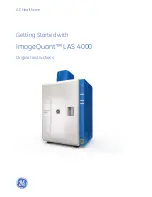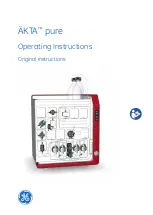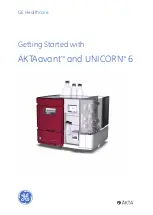
.
1 July 2019
-4-
E-Base
™
protein electrophoresis protocol
Important guidelines
·
E-PAGE
™
Gels contain SDS and are designed for electrophoresis under denaturing conditions.
·
Dilute samples with high salt or detergent concentrations to prevent loss of resolution.
See
Table of recommended final concentrations
.
·
For optimal separation use up to 20 μg of protein per well. Limit the protein (or lipid) amount in the sample to 2 µg/µL in the final sample volume for a proper LDS to protein ratio.
Step
Action
1–5 min
1
Prepare samples
a. Prepare protein samples in a total volume of 10 μL according to the following table. Scale
volumes according the to the required sample volume.
·
The total sample volume for 48-well gels is 10 μL.
·
The total sample volume for 96-well gels is 15 μL.
Reagent
Reduced
Non-reduced
Protein sample
x
μL
x
μL
4X E-PAGE
™
Loading Buffer 1
2.5 μL
2.5 μL
10X NuPAGE
™
Sample Reducing Agent
1 μL
—
Deionized water
to 10 μL
to 10 μL
b. Incubate the samples at 70°C for 10 minutes.
5–10 min
2
Prepare gel
cassette
a. Remove the gel from the package and gently remove the combs from the E-PAGE
™
cassette.
b. Insert the cassette into the E-Base
™
Device, starting from the right edge. When properly
inserted, the device indicates its initialized status with a steady red light.
Note
:The protocol type on the display shows EG for E-Gel
™
DNA cassettes, and EP for
E-PAGE
™
cassettes.
3
Load samples
Load samples with a multichannel pipettor.
Load a volume of
10 μL in each well for 48-well gels
.
Load a volume of
15 μL in each well for 96-well gels
.
a. Load 5–10 μL of deionized water into all wells prior to adding samples or standards.
b. Load prepared samples into sample wells. Keep all sample volumes uniform.
c. Load prepared E-PAGE
™
standard into marker wells.
d. Load deionized water in all empty wells.
























